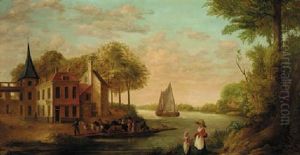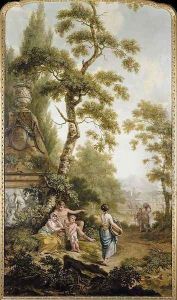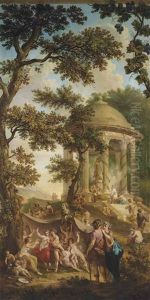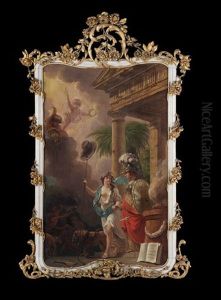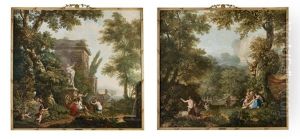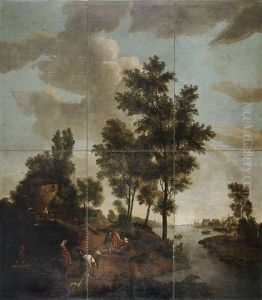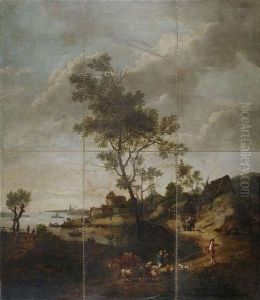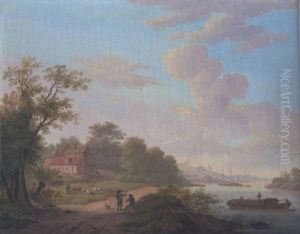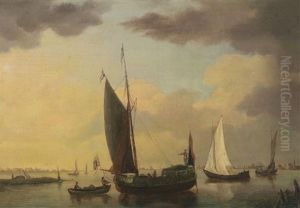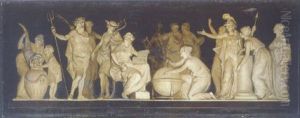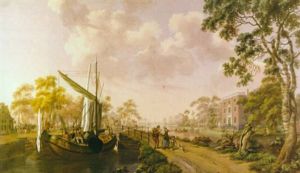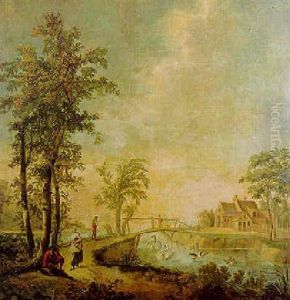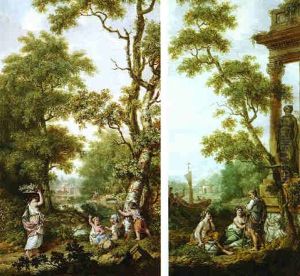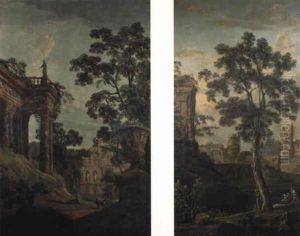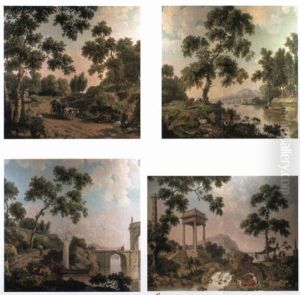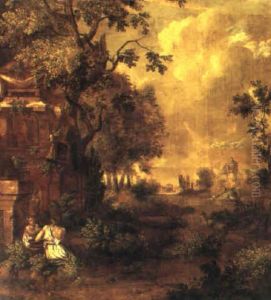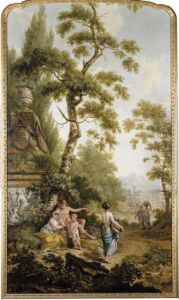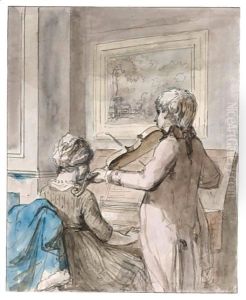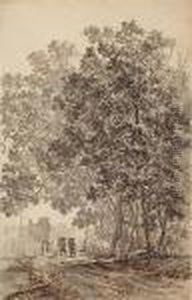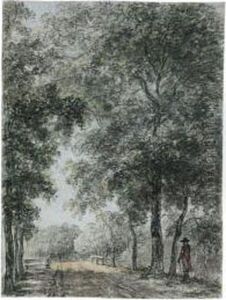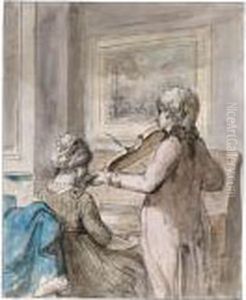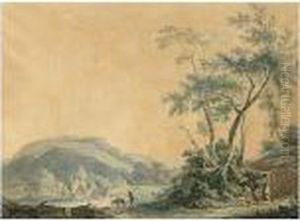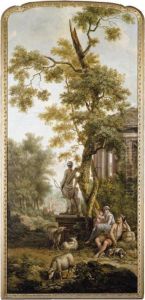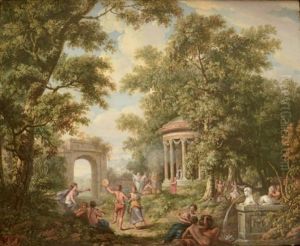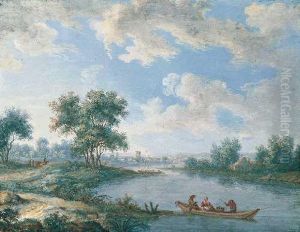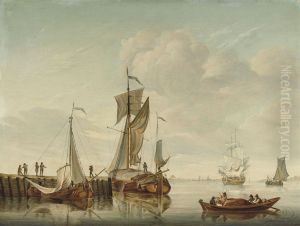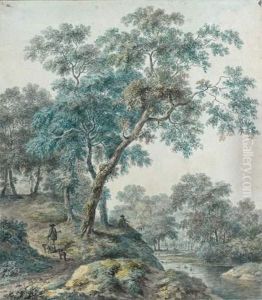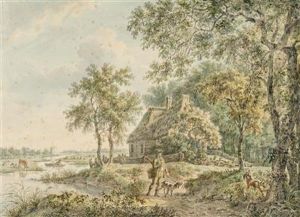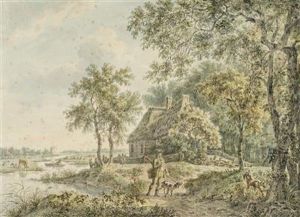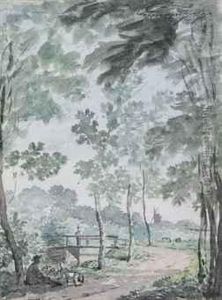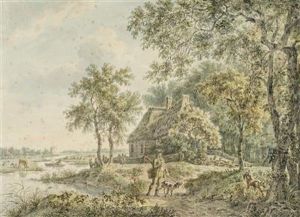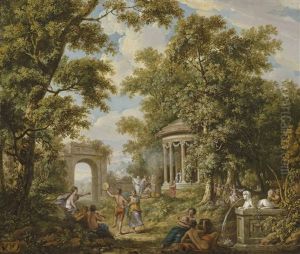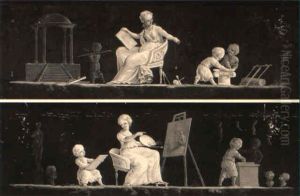Jurriaan Andriessen Paintings
Jurriaan Andriessen was a Dutch decorative painter and draughtsman born in Amsterdam on 12 July 1742. He hailed from a family deeply entrenched in the arts; his father, Andries Andriessen, was a painter of cityscapes and domestic interiors, and his brother, Anthonie Andriessen, specialized in painting battles. This artistic environment nurtured Jurriaan's talents from an early age.
Jurriaan's education in art began under the guidance of his father. He further honed his skills by studying under the decorative painter Anthony Elliger. To expand his artistic horizons, Andriessen also took lessons from the landscape painter Jan Maurits Quinkhard. In 1760, desiring a more comprehensive education, he enrolled at the Drawing Academy of Amsterdam, which was a pivotal step in his career. Seeking to refine his skills and knowledge even further, Jurriaan traveled to Germany in 1763 and then to Paris in 1766, where he was profoundly influenced by the French style of painting, which would come to define much of his later work.
Upon his return to the Netherlands in 1768, Andriessen established himself as a freelance decorative painter in Amsterdam. He gained fame for his elaborate decorations on walls and ceilings in the homes of wealthy citizens and in public buildings, showcasing a unique blend of the Rococo style, which was popular in France, with Dutch artistic traditions. His work not only included ornate wall and ceiling paintings but also designs for wallpapers, furniture, and even coaches, highlighting his versatility and creativity as an artist.
One of Andriessen's most notable contributions to the art world was his role in the establishment of the Felix Meritis Society in Amsterdam, a hub for music, literature, and science, where he worked as a director and decorated several rooms. His involvement with the society underscores his commitment to the broader cultural and intellectual milieu of his time.
Jurriaan Andriessen passed away on 31 August 1819 in Amsterdam. His legacy is reflected in the beauty and elegance of his decorative works, which continue to be admired for their artistic finesse and historical value. His career is a testament to the vibrancy of 18th-century Dutch art, embodying the era's fascination with beauty, elegance, and the interplay between Dutch traditions and French Rococo influences.
